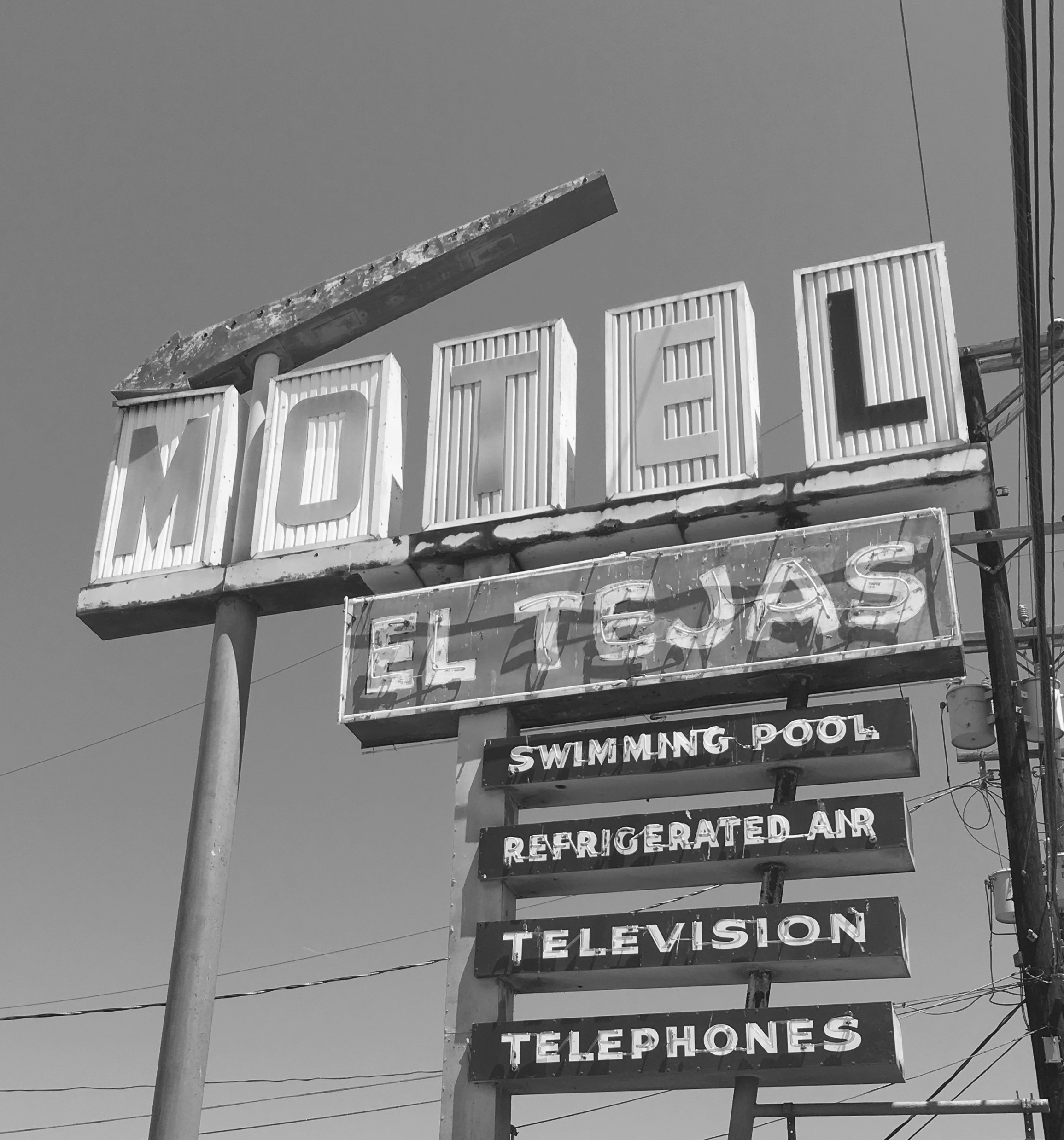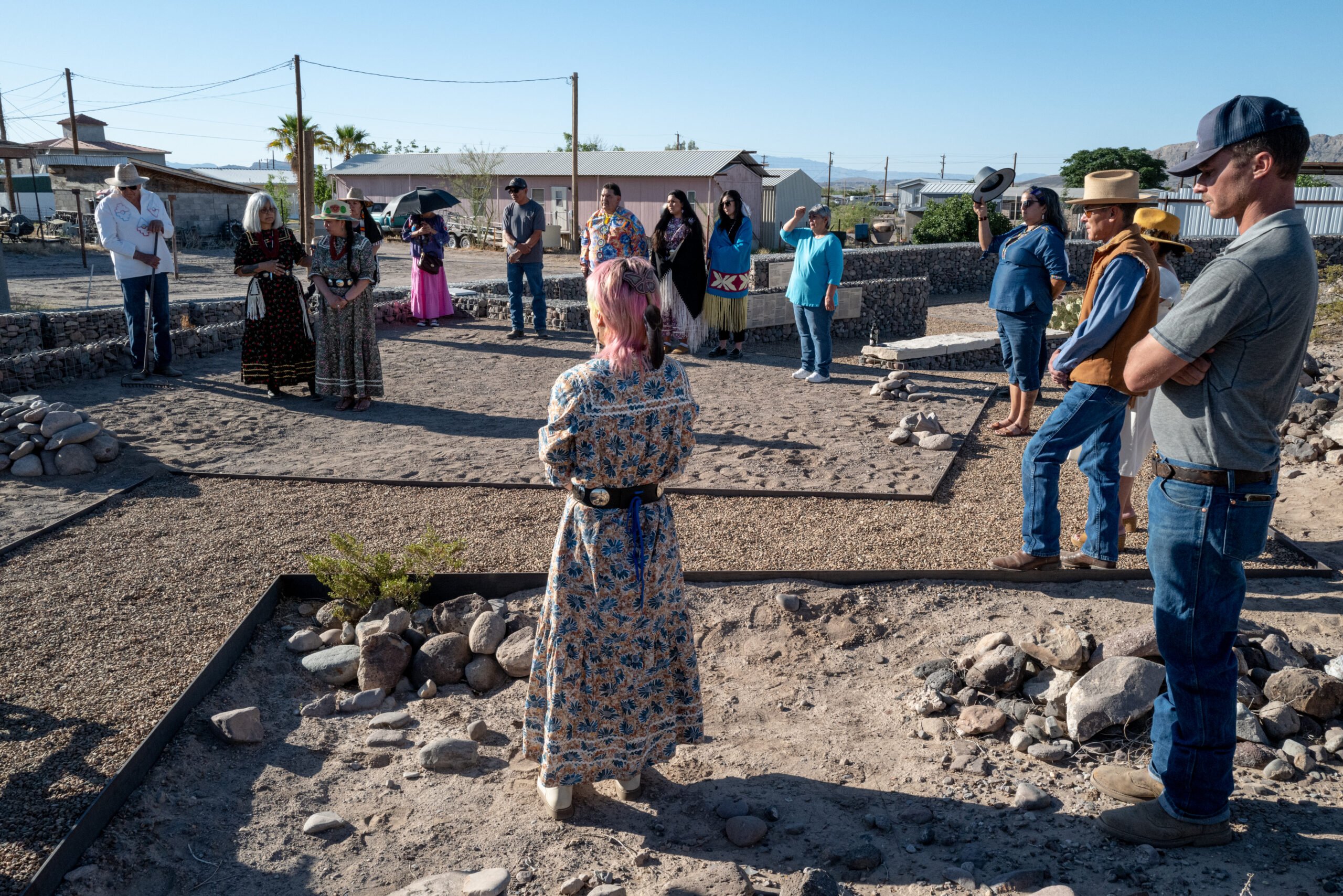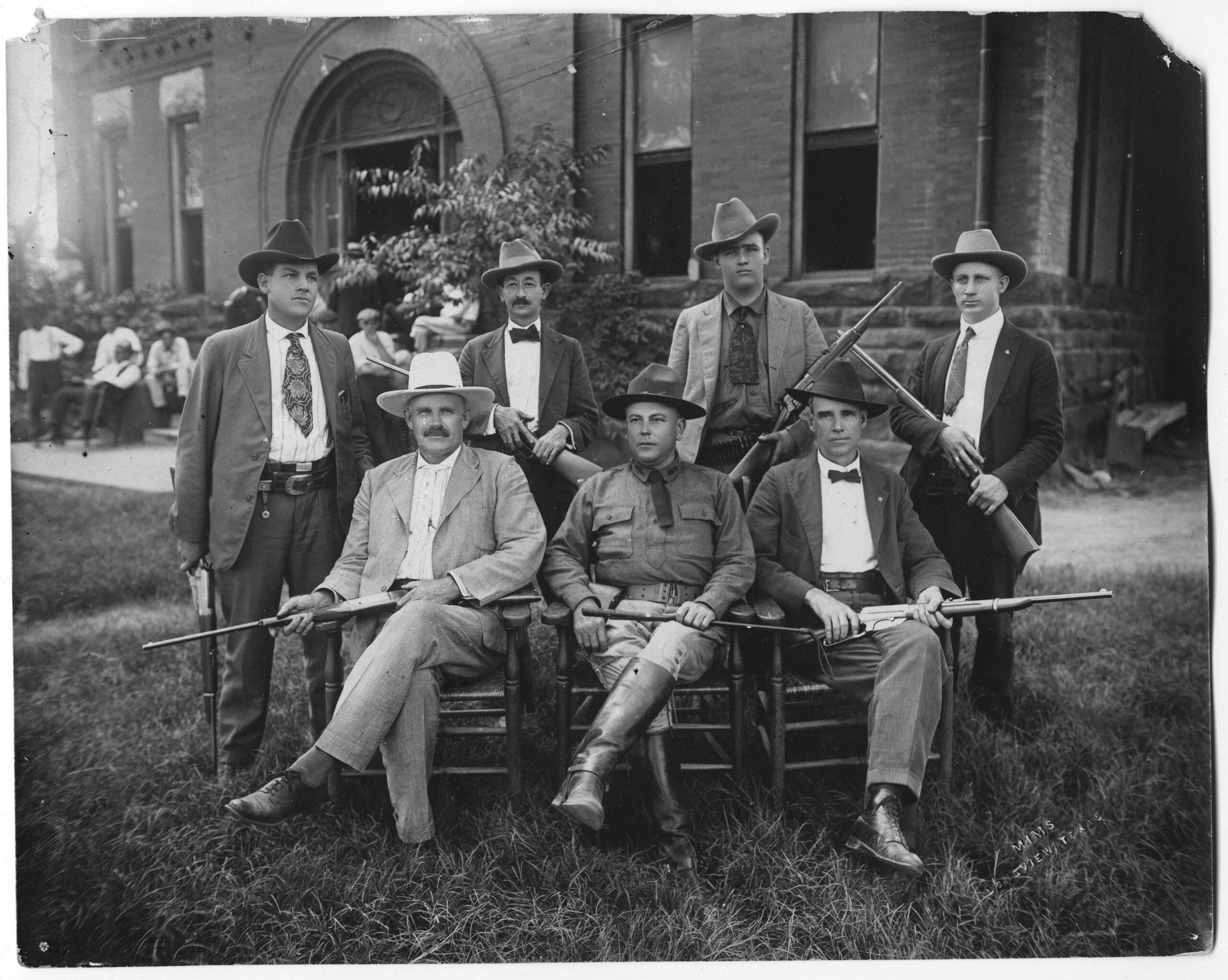
The Hidden Confederate History of the Texas Capitol: An Unofficial Guide
Soon after his election to the Texas Senate in 1990, Sen. Rodney Ellis (D-Houston) walked across the Texas Capitol grounds with his 5-year-old daughter and Congressman Mickey Leland’s young son. Of all the statues, he says, the children were most interested in the Confederate Soldiers monument, one of the first things visitors see coming through the southern gates.
The monument, erected in 1903, features four bronze figures representing the Confederate infantry, cavalry, artillery and navy. A bronze statue of Jefferson Davis towers over all. Etched in the granite base is a version of history repeated numerous times on the plaques and monuments that decorate the Capitol complex. Confederate soldiers, the engraving declares, “died for state rights guaranteed under the Constitution.”
“The people of the South,” it continues, “animated by the spirit of 1776, to preserve their rights, withdrew from the federal compact in 1861.”
Ellis was struck both by the distorted history of the Civil War and the fact that there were no existing monuments honoring black and Hispanic Texans.
The walk inspired Ellis to draft a resolution in 1993 directing the State Preservation Board to include in its master plan for the Capitol grounds a “permanent monument in tribute to African-American and Mexican-American Texans.”
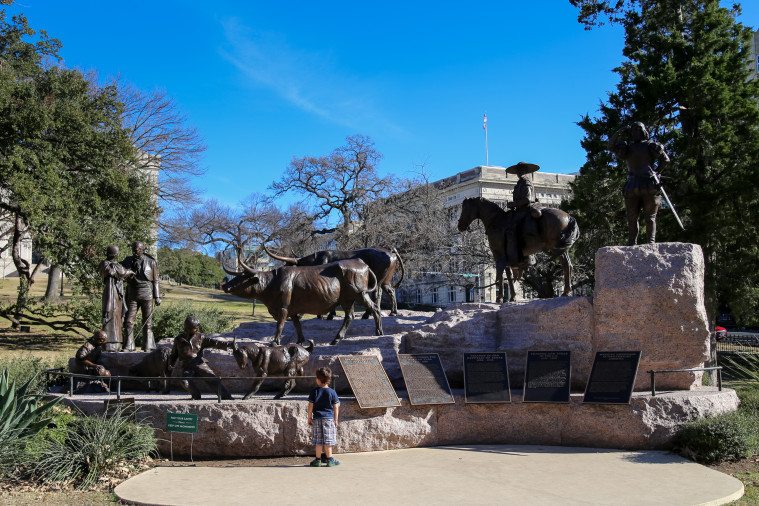
His resolution helped spur an effort to recognize Texas Hispanic heritage. In 2012, the Tejano Monument, recognizing early Spanish and Mexican explorers and settlers of Texas, was unveiled in 2012. But it’s been more than 20 years since Ellis’ resolution was adopted, and out of the 30 monuments on the Capitol grounds there still isn’t a single one recognizing the contributions of African Americans to Texas.
The exclusion is especially telling when one considers the story that the vast majority of the monuments venerate. One might assume that the collection would focus on Texas history’s greatest hits: the stand at the Alamo or the Battle of San Jacinto. Texans are, after all, attached to our independence tale, as the only state besides Hawaii to have once been its own nation. But a visitor to the Capitol, reading the inscriptions of the monuments that decorate its grounds and examining the portraits and plaques inside, gleans a very different story of Texas: one that celebrates the state’s involvement in the Civil War and offers a revisionist history of the causes of the conflict. (Read: not slavery.)
The Texas Capitol features at least 12 tributes to the Confederacy, funded primarily by the United Daughters of the Confederacy, an association of female descendants of Confederate veterans that strives to preserve the history of their ancestors. The Confederate monuments on the Capitol grounds were erected in the early 1900s, as those who had fought for the Confederacy were dying of old age.
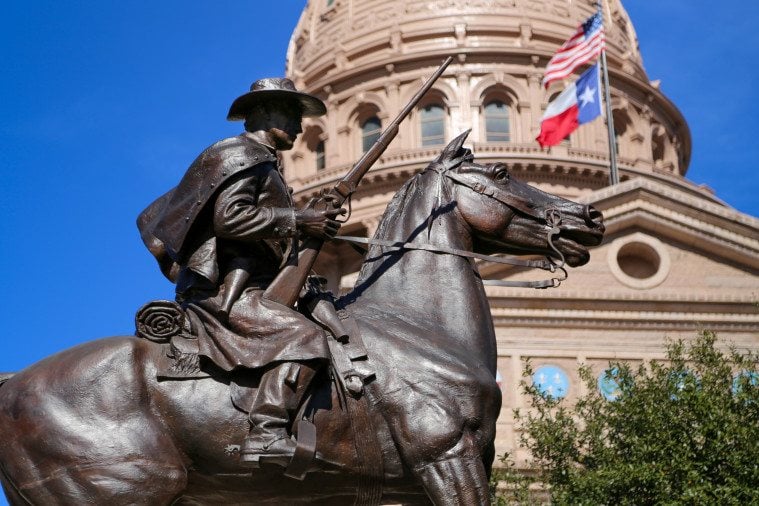
There are three iconic Confederate monuments that visitors will see on the Capitol grounds. Walking from the Confederate Soldiers monument north toward the south steps of the Capitol building, a visitor will see on the left Terry’s Texas Rangers (no relation to the famous law enforcement group). The monument was erected in 1907 in commemoration of the valor of the 8th Texas Cavalry. Benjamin Franklin Terry, a Brazoria County plantation owner, assembled the group, which fought in numerous battles during the Civil War and never officially surrendered.
Notably, Terry constructed the first railroad in Texas with slave labor, and also once “disabled” two of his own slaves when they attacked him with knives and axes. He fought with the Rangers for three months before his death at the Battle of Woodsonville, Kentucky.
Continuing along toward the east entrance, visitors will find that there is at least one Confederate flag still visible at the Capitol, carved into the obelisk of Hood’s Texas Brigade monument.
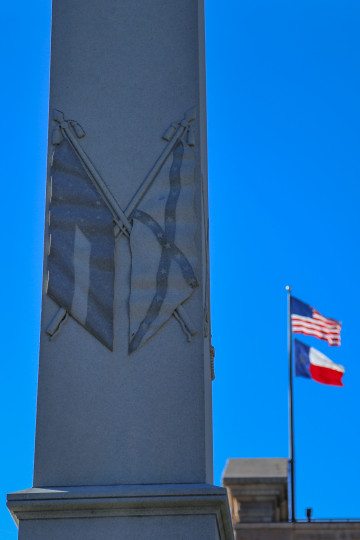
The monument, erected in 1910, includes quotes by Jefferson Davis and Lee among other Civil War notables. Ten thousand people attended a parade celebrating the unveiling of the “superb shaft,” including 5,000 schoolchildren, the University of Texas band and 200 of the brigade’s remaining members. In a letter to the Houston Post, a Confederate general praised the monument as a memorial to “American valor” and “our comrades who died to preserve and perpetuate the principles upon which the American Union was formed.”
“Monuments are milestones that mark our civilization and our patriotism,” General Stephen D. Lee said in the letter. “They awaken old reflections and dormant sympathies and keep alive the life-giving principles of freedom.”
A hundred years later, then-Land Commissioner Jerry Patterson helped to re-dedicate Hood’s monument. The event failed to draw quite as many people, but it did feature a bagpipe troupe and a small band of men dressed as Confederate soldiers, firing muskets on the Capitol grounds. “The Texas Capitol itself is a Confederate monument,” Patterson said in a press release about the event. “Texas can’t look away from that history.”
Texas may not be able to look away from this part of its past, but groups like the Children of the Confederacy—a division of the United Daughters of the Confederacy—have done a pretty good job rewriting that history to romanticize the motivations that drew Texas into the Civil War.
Inside the Capitol, a few steps away from the august rotunda, is a bronze plaque dedicated in 1959 (nearly 100 years after Texas’ secession from the Union) by the Texas Chapter of the Children of the Confederacy, emblazoned with the group’s mission statement. The proclamation reads, in part: “We, therefore, pledge ourselves to preserve pure ideals … to study and teach the truths of history (one of the most important of which is that the War Between the States was not a rebellion, nor was its underlying cause to sustain slavery).”
At a February committee hearing, freshman Sen. Bob Hall (R-Edgewood) went further, referring to the Civil War as “the War of Northern Aggression.”
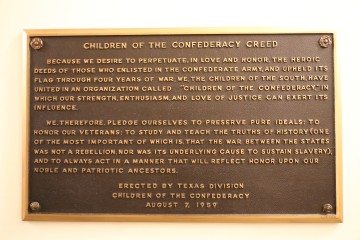
The insistence that the South seceded to protest states’ rights rather than slavery is disingenuous, according to University of Texas African American studies professor Minkah Makalani.
“If you go and look at the historical documents or congressional records, both before, during and after the Civil War,” Makalani said, “they say that the Civil War is precisely about slavery.”
For example, the Texas Ordinance of Secession, the document that officially separated Texas from the Union in 1861, declares that the U.S. government was “established exclusively by the white race, for themselves and their posterity” and that “the African race had no agency in their establishment.”
African Americans, it declares were “rightfully held and regarded as an inferior and dependent race.” It continues to say that “the servitude of the African race … is mutually beneficial to both bond and free, and is abundantly authorized and justified by the experience of mankind, and the revealed will of the Almighty Creator.”
Margaret Daniel, custodian of the Texas division of the United Daughters of the Confederacy, isn’t convinced that slavery was the primary catalyst of the war. “I had three great-grandfathers that fought for the Confederacy, and the underlying cause of the war was states’ rights,” she said.
Makalani says that the plaque’s message was more of a reaction to the emerging civil rights movement than a belated effort to honor Civil War veterans.
In the 50s and 60s, states throughout the South adopted Confederate markers. In 1956, Georgia adopted a state flag incorporating the Confederate stars and bars, and in 1962 South Carolina decided to fly a Confederate battle flag above its state capitol.
Except for the flag on Hood’s monument, no Confederate battle flag can be found outside the Texas Capitol. In 2011 the state even rejected a proposal for license plates featuring the flag (the case was contested and is currently before the United States Supreme Court), prompting Patterson, who sponsored the proposal, to argue that Texas is insufficiently committed to its Confederate heritage.
He told the Observer that despite the offensive nature of the Confederate monuments to some, the markers honor important history.
“People have a constitutional right to be offended, but tough shit,” Patterson said. “We need to honor those young men who answered the call in 1861. It’s unequivocal that the average soldier wasn’t fighting for slavery.”
Ellis doesn’t think that things are settled.
“History belongs to he or she who writes it,” Ellis said.
Indeed, the champions of a more inclusive accounting of Texas’ past have had some fairly recent successes. In 2000, in a plan prompted by NAACP protests, two plaques honoring the Confederacy were quietly removed from the Texas Supreme Court building, which was built with money that had been transferred from the Confederate Pension Fund. In their place are two new plaques, including one that reads: “The courts of Texas are entrusted with providing equal justice under the law to all persons regardless of race, creed, or color.”
In 2011, after an unsuccessful attempt to sue the state for removing the plaques, the Texas Sons of the Confederacy applied to have a new historical marker placed in the building, which would be titled “Converting the Confederate Pension Fund into a Building Fund: How the Texas Supreme Court Building Became a Confederate Monument.”
Ellis blasted the plan and urged the Texas Historical Commission in a letter to reject the marker. “That is the real Civil War,” Ellis wrote of the Texas declaration of secession, “men united to preserve the fundamental wrong of one human owning another. Slavery was not a minor cause; it was party of its essential, detestable heart.”
Although Ellis is against the construction of additional Confederate monuments, he doesn’t think that any changes should be made to the existing ones.
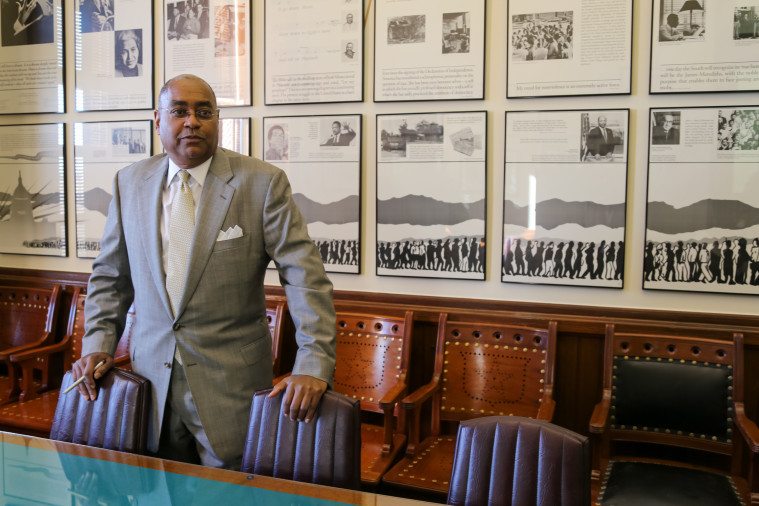
“As opposed to me putting energy into trying to take those Confederate monuments down, I advocate that we be more representative and be more accurate in terms of presenting our history,” he said.
In 2011, Ellis passed legislation directing the State Preservation Board to establish an African American Texans monument on the Capitol grounds. The bill passed both chambers unanimously.
The monument was slated to be completed in March 2015, but the foundation responsible for fundraising is still seeking $1.8 million for the memorial’s completion. The State Preservation Board must also approve a construction permit and give its approval to the monument’s final design. A new target date for its completion has not been set.
In the meantime, Ellis has succeeded in securing one space devoted to African-American accomplishments: a Senate conference room, 3E.4, just outside the Senate chamber. In 2011, Ellis admired a touring Smithsonian exhibit about the civil rights movement portrayed in posters. Incidentally, the exhibit was in need of a permanent home. Patsy Spaw, the secretary of the Senate, had the posters put in the conference room. That’s where they’ve stayed ever since. Later, other documents, letters and photographs relating to the movement—as well as the women’s suffrage movement—were added to the room.
Unofficially, 3E.4 is known as the Civil Rights Room. It’s the only tribute to the civil rights movement at the Capitol and not one that visitors are likely to see. The space isn’t open to the public—it’s used for Senate meetings and is reservation-only.
